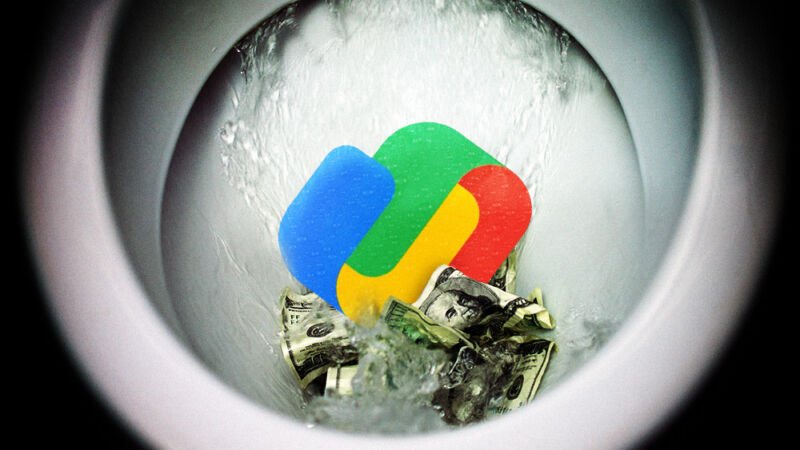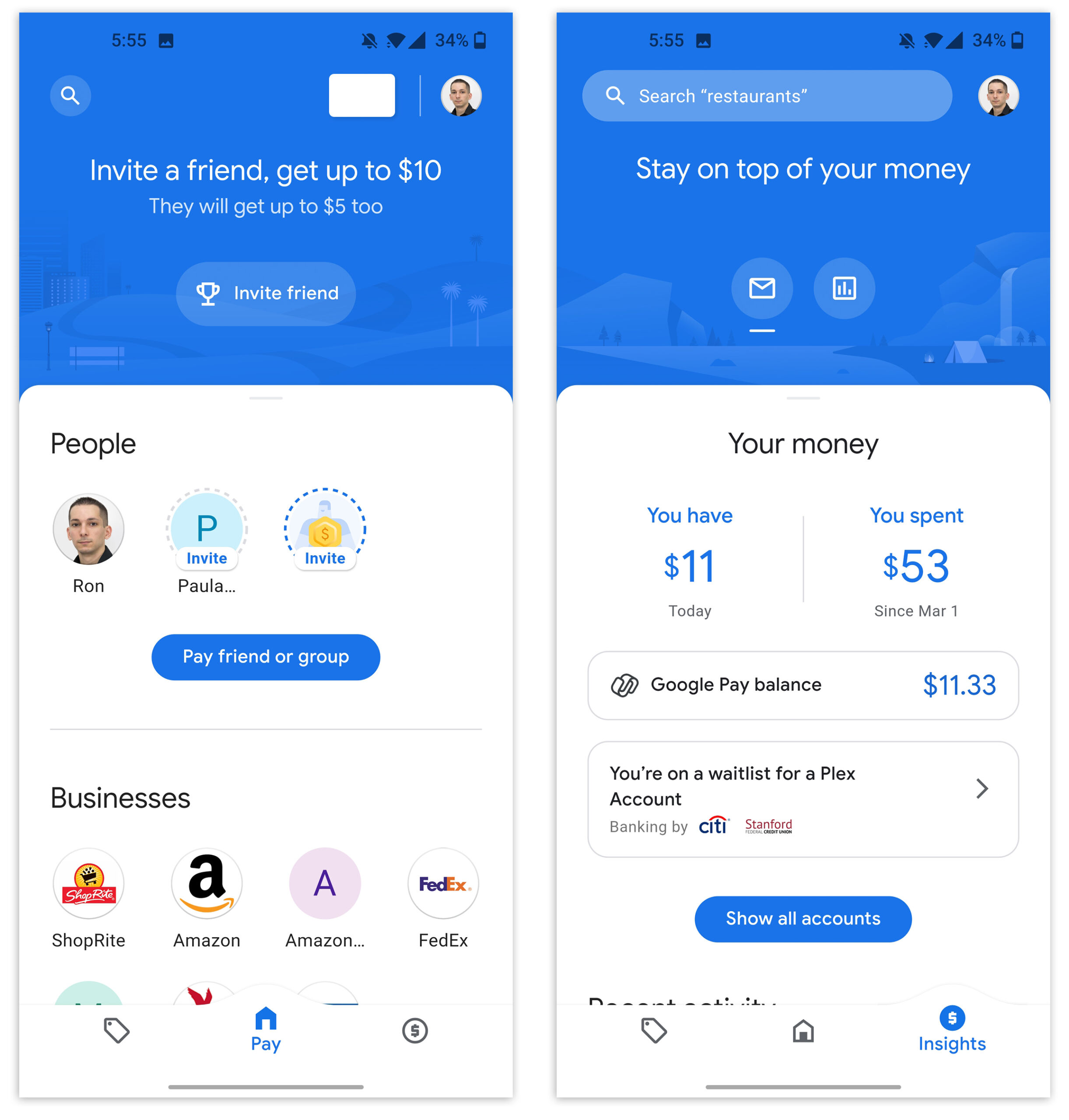Google Wallet takes over app duties, but it looks like Google is quitting P2P payments.

Google has killed off the Google Pay app. 9to5Google reports Google’s old payments app stopped working recently, following shutdown plans that were announced in February. Google is shutting down the Google Pay app in the US, while in-store NFC payments seem to still be branded “Google Pay.” Remember, this is Google’s dysfunctional payments division, so all that’s happening is Google Payment app No. 3 (Google Pay) is being shut down in favor of Google Payment app No. 4 (Google Wallet). The shutdown caps off the implosion of Google’s payments division after a lot of poor decisions and failed product launches.
Google’s NFC payment journey started in 2011 with Google Wallet (apps No. 1 and No. 4 are both called Google Wallet). In 2011, Google was a technology trailblazer and basically popularized the idea of paying for something with your phone in many regions (with the notable exception of Japan). Google shipped the first non-Japanese phones with the feature, fought carriers trying to stop phone payments from happening, and begged stores to get new, compatible terminals. Google’s entire project was blown away when Apple Pay launched in 2014, and Google’s response was its second payment app, Android Pay, in 2015. This copied much of Apple’s setup, like sending payment tokens instead of the actual credit card number. Google Pay was a rebrand of this setup and arrived in 2018.
The 2018 version of Google Pay was a continuation of the Android Pay codebase, which was a continuation of the Google Wallet codebase. Despite all the rebrands, Google’s payment apps were an evolution, and none of the previous apps were really “shut down”—they were in-place upgrades. Everything changed in 2021 when a new version of Google Pay was launched, which is when Google’s payment division started to go off the rails.

The 2021 Google Pay was a totally different codebase based on a Google payments app that was originally developed for India, called Google Tez. Tez was rebranded to Google Pay for the US market and launched on the Play Store. Being designed for India, where a phone might be your first and only Internet device, meant the new Google Pay had a lot of design decisions that didn’t fit the US market. It used a phone number for your identity instead of your Google Account, and when you started it up for the first time, Google Pay didn’t know who you were. It was like signing up for a new service that wasn’t owned by Google. The phone number identity system meant Google had to shut down the previously useful Google Pay website, which could be used for peer-to-peer (P2P) payments, just like Venmo. You could only be signed in to one device at a time, which is maybe fine in the phone-exclusive world of India but weird in the US, where people have phones, watches, laptops, tablets, and PCs.
Because the two versions of Google Pay were separate codebases, Google didn’t upgrade users from the old app to the new app. They lived on the Play Store as separate apps, both called “Google Pay,” and for a while, it was possible to download and install both apps on your device. A big use case for the app was P2P payments, but money sent via the new app didn’t arrive on the old app, and vice versa, so for months of the transition, Google Pay just wasn’t a reliable money-sending service that normal people could figure out.
ARS VIDEO
How The Callisto Protocol’s Gameplay Was Perfected Months Before Release
FURTHER READING
The new Google Pay repeats all the same mistakes of Google Allo
Google often feels like a disorganized company with constantly shifting priorities, and a big reason behind that is the lack of top-down initiatives from the CEO. That means the real driving force behind most projects at Google are mid-level executives who show up with grand plans and then leave—either in disgrace or triumph—when those initial plans run their course. In this case, the “new Google Pay” disaster was a project reportedly driven by Caesar Sengupta, Google’s payments chief from 2018–2021. According to a Business Insider report from 2021, Sengupta’s goal in 2018 after taking over the payments division was “bringing the US Google Pay app more in line with the version Google built for India.” Part of this ambitious plan involved a Google bank account called “Google Plex.” These would have been backed by Citi and Stanford Federal Credit Union, and you get plastic cards and do all your normal banking stuff via an app. Google launched a public waitlist for bank accounts and got 400,000 sign-ups.
Bank accounts never arrived, though, because Sengupta’s division fell apart basically the second the public was exposed to his vision. The Indian app was widely rejected by US users—that Business Insider report quotes a former employee who says the new app “wasn’t growing at the rate we wanted it to.” In its shutdown announcement, Google noted that the relatively new Wallet app, which was a return to the normal way of doing things, is “used five times more than the Google Pay app in the US.” Sengupta left Google one month after shutting down the old Google Pay and making his new app mandatory for all US users. Sengupta’s departure kicked off a “mass exodus” of 40 employees in the payments division. With Sengupta gone, the plan for bank accounts died a few months later.Advertisement

Google spent the remainder of 2021 and 2022 undoing basically all of Senguta’s changes. The new Google Wallet rolled out in July 2022 and acted like more of a normal Google app. Google is shutting down the old Google Pay app in the US, but it never really got an international rollout. It’s unclear if that was ever part of the plan, but if it was, then either Senguta’s departure or the poor reception halted any plans for a worldwide rollout. Alongside the launch of Google Wallet, Google actually published a rather ridiculous world map detailing which payment apps would be going to which countries. Only Singapore and the US were getting new Google Pay, while everyone else was jumping from old Google Pay to Google Wallet.
Lost in all of this app shuffling is that Google supposedly has no P2P payments system now. Wallet only supports tap-to-pay, gift cards, and driver’s licenses—it doesn’t have a way to send money to friends, family, or anybody else. This worked fine on Google Pay before Google blew everything up. Now, it is presumably ceding that market to apps like Venmo and Zelle, though it’s hard to imagine anyone sticking with Google’s payment app after the confusing and broken transition.




